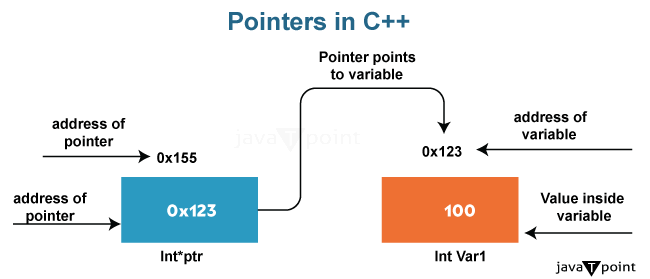Application of pointers in C++In this article, we will discuss the applications of pointers in C++. But before discussing its applications, we must know about the pointers. The introduction of "C++ pointers":Pointers are vital elements of C++ that enable sophisticated memory manipulation and dynamic distribution of resources. In essence, a pointer is a variable that holds the memory location of another variable, thus enabling immediate accessibility to and alteration of information stored in computers and memory. The ability of C++ programmers to automatically allocate and deallocate memory via pointers is a crucial component of efficiently utilizing memory. Pointers are often used for tasks such as interacting with external libraries or devices, allocating dynamic memory, and manipulating arrays. They are necessary for optimizing program productivity and building complex data structures. Memory leaks and segmentation errors persist despite the potential benefits of pointer management; hence, the handling of memory must be continually monitored. 
Syntax:It has the following syntax: Example:Let us take an example to illustrate the pointers in C++. Output: Value of x: 10 Value at the memory address pointed by pointer: 10 Applications:In C++, pointers have several applications that can be utilized to manipulate data efficiently and flexibly, manage memory, and improve programs. The most popular uses for pointers in C++ are as follows: 1. Dynamic memory item allocation: Dynamic memory item allocation, which uses pointers, enables the construction of data structures with unknown dimensions at compile time. It is very helpful when interacting with data structures that might have variable sizes during program execution with the value-linked lists and array elements. 2. Accepting function parameters: Pointers are used to pass function-based variables. It enables functions to change the values of variables provided through them directly. The object in syntax has been altered by utilizing the pointer. 3. Pointers as well as array items: Pointers offer an effective way to access and modify elements of an array. Table traversal, table manipulating others, and dynamic table allocation are all possible with this item. 4. Data structures and linked lists: Pointers are essential when creating dynamic data structures like linked lists, in which each element points to the one after it in a predetermined order. It facilitates the efficient addition and retrieval of elements. 5. Pointer arithmetic: Pointers enable effective memory item traversal by implementing pointer arithmetic. It is especially advantageous when working with arrays or large memory chunks. 6. File transformation: File manipulation employs pointers to read and write information to and from files. The component permits the processing of the file's contents and aids in the effective management of data. Conclusion:In conclusion, C++'s pointer implementation is adaptable and crucial to a wide variety of computer applications. Pointer arrays enable the successful handling of information and programmable memory item allocation, which aids developers in optimizing memory item management. In several applications, including dynamic memory item allocation, function argument passing, array item manipulation, and the creation of structures for data like linked lists, pointers provide flexibility and optimize resource consumption. Adaptive memory item allocation due to pointers promotes more responsive and adaptable programs by making it simpler to construct structures for data defined at the time of execution.
Next TopicArgument Coercion in C/C++
|
 For Videos Join Our Youtube Channel: Join Now
For Videos Join Our Youtube Channel: Join Now
Feedback
- Send your Feedback to [email protected]
Help Others, Please Share









